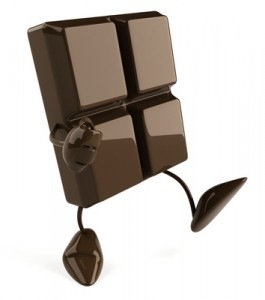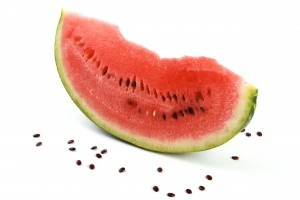Menus, both restaurant and take-out, are filled with descriptive and sometimes mouth-watering words. They’re meant to:
- entice you to order certain items by making them sound scrumptious, or to
- make you think that a food, sauce, or dressing is lower in calories or an awesome health food.
Maybe Yes, Maybe No Adjectives
This is a list of words frequently used on menus to describe foods that can be considered “yellow light foods.” They are the foods you should cautiously choose because they may or may not be healthy choices.
- Amandine/Almondine
- Baked
- Basted
- Light/Lite
- Marinated
- Panini
- Reduced
- Sauteed
- Stewed
- Stir-Fry
- Vegetarian
- Vinaigrette
Why They’re Yellow Light Foods:
Amandine/Almondine: Means food that is garnished with almonds. The caution: the ingredients (often green beans, fish, asparagus, potatoes) are usually cooked with butter and seasonings and sprinkled with whole or flaked toasted almonds. The butter makes them taste good and allows the nuts to stick to the main ingredient — but both add significant calories.
Baked: Food that is cooked by using dry heat. The caution light applies to the main ingredients. What is being baked – is it baked fish or a baked cookie?
Basted: Means that either the juices of the cooking meat, melted fat, or other liquids such as marinades – are poured over meat during the cooking process to keep it moist. The caution is in determining what the basting liquid is: fat or the juice of the meat?
Light or lite: If 50% or more of the calories in a food come from fat, the fat must be reduced by at least 50% per serving to be called light. If less than 50% of the calories come from fat, the fat must be reduced by at least 50% or the calories reduced by at least 1/3 per serving for the food to be called light. The caution: food manufacturers determine these percentages through laboratory analysis – but how does your local diner determine what is “light or lite” even if there is a “light or lite” claim on their menu?
Marinated: Means to soak or steep meat, fowl, fish, or vegetables in a liquid mixture — which is usually vinegar or wine and oil combined with various spices and herbs. The caution: how much oil or even sweetener is in the marinade that has permeated the meat, fowl, fish, or vegetables?
Panini: A pressed and toasted sandwich. The caution: What are the sandwich ingredients — for instance are they heavy on vegetables or on salami — and how much oil is used on the grill? If the sandwich comes out nice and crunchy and crispy you can bet it was pressed on a grill loaded with grease.
Reduced: To be called reduced in calories, a food must contain at least 25% fewer calories per serving than the reference food (the version of the food that is not lower in calories). For meals and main dishes there must be at least 25% fewer calories per 100 grams of food. The caution: the “reference food” (the regular, not low in calories version) may be a very high calorie food to begin with – meaning that 25% less of very high calories is still a lot calories. And who’s measuring in the kitchen of your local restaurant? Don’t be duped.
Sauteed: Means food that is fried quickly in a little oil. The caution is the same as with stir-fry (see below); the amount of oil and the temperature of the oil.
Stewed: To cook by slowly boiling or simmering. The caution: what is the stewing liquid — is it tomato based or is there a lot of fat?
Stir-Fry: Means to cook small pieces of vegetables, grains, or meat by quickly frying and stirring them in a small amount of oil over high heat (frequently in a wok). The caution is the amount and temperature of the oil. Oil at a lower temperature will lead to a longer cooking time and the ingredients absorbing more oil.
Vegetarian: Refers to a dish made without meat, fish, or fowl. The caution is that many vegetarian dishes are prepared with a lot of breading, cheese, and fat.
Vinaigrette: A common salad dressing made with olive or other oils and combined with vinegar and/or lemon juice (plus seasonings and herbs). The caution is in the proportion of oil to the acidic vinegar or lemon juice. Sometimes it might be as great as 4:1 oil to acid and sometimes it might be 1:1, or half oil and half acid. A fifty-fifty mix will be lower in calories than a mix that is 75% oil.
Do you have any “yellow-light foods” to add to this list?
For more menu key words and menu hacks be sure to sign up for my newsletter, “Eat Out, Eat Well.” Just enter your email address in the box on this page — and don’t forget to confirm when you’re prompted by email.




